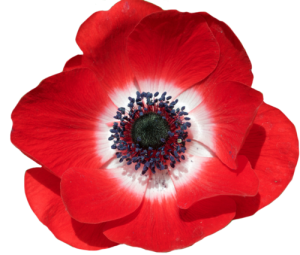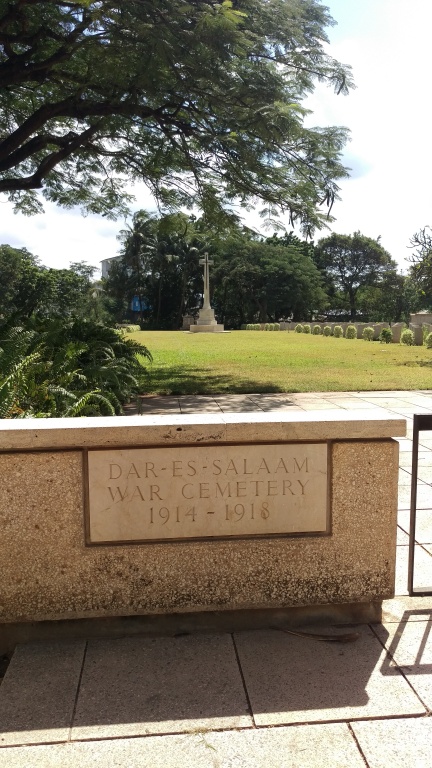Personal Details
Born at Terrick Hall, Whitchurch, Shropshire on 18th March 1878 (baptised 24th April 1878), the only surviving son of Samuel Henry and Elizabeth Sandbach of Cherry Hill, Malpas, Cheshire and Handley, Cheshire.
Hugh attended Eton College from where he went up to Christchurch College, Oxford in 1897 and served for twelve years in the 1st Royal Dragoons during the South Africa Campaign. He went to live on the Kedowa Estate, Kenya and joined the East African Mounted Rifles, serving as their commanding officer. He died when in command of the mounted section of volunteer force of British settlers raised to repel the German invasion.
Hugh is commemorated on war memorials at Eton College, Christchurch Oxford and Muthaiga Club, Kenya.
Military Details
Regiment : East African Mounted Rifles, formerly 1st Royal Dragoons (Captain)
Rank : Captain and Commanding Officer
Service Number :
Killed in Action; Tanzania 3 November 1914 Aged 36
Hugh was awarded the Campaign Medals (1915 Star, British War Medal and Allied Victory Medal).

The 1914 Star (also known as 'Pip') was authorised under Special Army Order no. 350 in November 1917 and by an Admiralty Fleet Order in 1918, for award to officers and men of the British and Indian Expeditionary Forces who served in France or Belgium between 5 August and midnight of 22–23 November 1914. The former date is the day after Britain's declaration of war against the Central Powers, and the closing date marks the end of the First Battle of Ypres.
The 1914–15 Star (also known as 'Pip') was instituted in December 1918 and was awarded to officers and men of British and Imperial forces who served against the Central European Powers in any theatre of the Great War between 5 August 1914 and 31 December 1915. The period of eligibility was prior to the introduction of the Military Service Act 1916, which instituted conscription in Britain.
The British War Medal (also known as 'Squeak') was a silver or bronze medal awarded to officers and men of the British and Imperial Forces who either entered a theatre of war or entered service overseas between 5th August 1914 and 11th November 1918 inclusive. This was later extended to services in Russia, Siberia and some other areas in 1919 and 1920. Approximately 6.5 million British War Medals were issued. Approximately 6.4 million of these were the silver versions of this medal. Around 110,000 of a bronze version were issued mainly to Chinese, Maltese and Indian Labour Corps. The front (obv or obverse) of the medal depicts the head of George V. The recipient's service number, rank, name and unit was impressed on the rim.
The Allied Victory Medal (also known as 'Wilfred') was issued by each of the allies. It was decided that each of the allies should each issue their own bronze victory medal with a similar design, similar equivalent wording and identical ribbon. The British medal was designed by W. McMillan. The front depicts a winged classical figure representing victory. Approximately 5.7 million victory medals were issued. Interestingly, eligibility for this medal was more restrictive and not everyone who received the British War Medal ('Squeak') also received the Victory Medal ('Wilfred'). However, in general, all recipients of 'Wilfred' also received 'Squeak' and all recipients of The 1914 Star or The 1914/1915 Star (also known as 'Pip') also received both 'Squeak' and 'Wilfred'. The recipient's service number, rank, name and unit was impressed on the rim.
Further Information
Report in the Chester Chronicle 14th November 1914 regarding the death of Hugh Handley Sandbach
"CAPT. HUGH H. SANDBACH KILLED IN GERMAN EAST AFRICA
The news of the week carries on its wing another of the sad stories of the war in Europe, and of its effects in the far distant African Continent, and incidentally adds another name to the local list of the glorious dead, who have given their lives in defence of British hearths and homes. Week after week during the last month a son of one or other of the best houses in the district has found peace in eternal rest, while the families are left to mourn those of their dear ones who have fallen fighting bravely in a just cause. This week we have with much regret to record the death of Capt. Hugh H. Sandbach, only son of Mr. and Mrs. S. H. Sandbach of Cherry Hill, Malpas, who was killed on Wednesday week in German East Africa after a brilliant career in the Army.He was the commandant of a force of East African Mounted Rifles, which he organised in British East Africa, and it was apparently during an incursion into the enemy's country that he met his death. The enemy appears to have been in considerable force, for in a letter home dated the 5th October Capt. Sandbach says:- "We have been busy on the Border pushing the Germans out, and we have succeeded each time they tried. I have the mounted regiment of East African Rifles. One of my squadrons with only 30 men took on 200 of the enemy about a week ago. We lost 12 and they lost over 30. They retired over the border. Capt. Chapman, who was with me at Eton, was in command of the squadron. They were over 20 miles from us, and we did not hear of the fight until it was over, or I think we could have captured the lot." That it was the gallant little band's intention to assume the offensive is gathered from the concluding portion of the letter. "We hope," he adds, "to go into German East Africa, but we are waiting for Indian troops who are now arriving. The Germans were too strong for us to go in alone, but they have 5,000 regulars and a lot of native troops and guns," but in a cheery final, the writer says: "We have managed to keep them out!"
Subsequent events can only be conjectured, for the news of his death was conveyed in a telegram from Lord Kitchener received on Saturday morning, which ran: "Deeply regret to inform you that Capt. H. H. Sandbach, late Royal Dragoons, was killed in action in an engagement at Longido, in German East Africa, November 4th. Lord Kitchener expresses his sympathy." The King and Queen telegraphed to Mr, Sandbach on Sunday deeply regretting the loss both the Army and he had sustained in the death of his son in the service of the country, and expressed their sympathy.
Capt. Sandbach received his commission in the Royal Dragoons from Oxford at the beginning of the South African war, serving through the war with his regiment, and being subsequently drafted to India, where he remained for eight years, retiring some two years ago to join some friends in an estate in Londiani, British East Africa. The news of his death was received with deep regret on all hands in the district, and sympathy was expressed for his parents and relatives. Mr. S. H. Sandbach is a well-known country gentleman, and has taken a very active part in public matters in Cheshire, and both he and his family have closely identified themselves with any work having for its object the benefit of the town and neighbourhood. Not only in Malpas, but in Handley, Chester, the family are held in the highest esteem, and it is here especially that one hears recounted the stories exemplifying his excellence as a landlord and of his qualities as an English gentleman. Capt. Hugh H. Sandbach's early career as a soldier and his absence in India and Africa in that capacity prevented his close association with local affairs , but whenever he had been at home he had manifested a keen interest in the good work his parents and sisters had in hand in the district. "
Chester Chronicle 14th November 1914
Taken from Forces War Records
If you can provide any further information on Hugh Handley Sandbach please get in touch by leaving a comment below, using our Contact Form or by calling in to Whitchurch Heritage Centre.
Information provided by Whitchurch Museum and Archives


